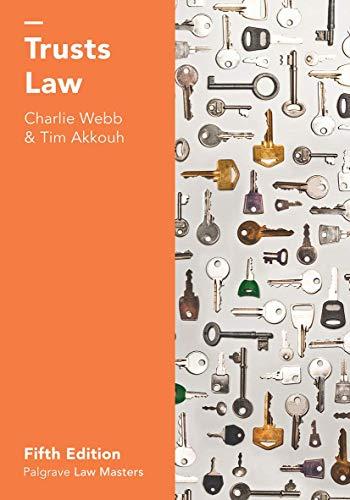Question
Use the following excerpt from a decision of the Navajo Supreme Court to answer the following 5 questions This case arises out of a fatal
Use the following excerpt from a decision of the Navajo Supreme Court to answer the following 5 questions This case arises out of a fatal accident between a motorist and a horse and concerns the intersection of comparative negligence and nalyeeh. The Kayenta District Court dismissed this case because it believed those concepts to be fundamentally incompatible, and the court therefore applied only the doctrine of comparative negligence and refused to use nalyeeh. This Court disagrees, reverses the lower court, and remands the case for further proceedings.
The District Court ruled that it is legally impossible to proceed under both comparative negligence and nalyeeh because they are incompatible doctrines. According to the court, negligence is an Anglo-American legal theory based on adversity. Conversely, nalyeeh is a Navajo theory based not on adversity, but on the restoration of relationships, and, therefore, they are mutually exclusive.
That the concepts of negligence and comparative negligence, as expressed in the English legal terms of art, originated in the Anglo-American adversarial system does not per se make it incompatible with nalyeeh. There is no conflict between comparative negligence and nalyeeh. Comparative negligence serves the purposes of identifying who is responsible to make the injured party whole and allocating the responsibility for the injury between them. The doctrine assures that an individual tortfeasor is responsible only for his or her actions and is not responsible for the conduct of others. This is a Navajo principle, even if the Court uses Anglo-American legal language to describe it. Nalyeeh defines how the responsible parties, once identified and once their collective responsibility is allocated, make the injured party whole. They are indeed then not incompatible doctrines but work together to bring people back into harmony.
The District Court thus erred, and this Court hereby reverses the District Court and remands this case for further proceedings consistent with this opinion.
Determine whether each of the following statements is true or false:
Question 16 (2 points) Saved If on remand, the District Court finds that the motorist was not a Navajo citizen, the stretch of road where the accident occurred was not on the reservation, the District Court should dismiss the case for lack of jurisdiction.
Question 16 options: True False Question 17 Saved If the party that lost this appeal wants to challenge the Navajo Supreme Court's decision, that party can appeal to the US Supreme Court.
Question 17 options: True False Question 18 Saved The Navajo Supreme Court's use of the Navajo language in this decision means that it is applicable only to Navajo citizens.
Question 18 options: True False Question 19 Saved On remand, the District Court can continue to stick to its position that comparative negligence and nalyeeh are mutually incompatible.
Question 19 options: True False Question 20 Saved The excerpt demonstrates the use and development of tribal common law.
Question 20 options: True False
Step by Step Solution
There are 3 Steps involved in it
Step: 1

Get Instant Access to Expert-Tailored Solutions
See step-by-step solutions with expert insights and AI powered tools for academic success
Step: 2

Step: 3

Ace Your Homework with AI
Get the answers you need in no time with our AI-driven, step-by-step assistance
Get Started


